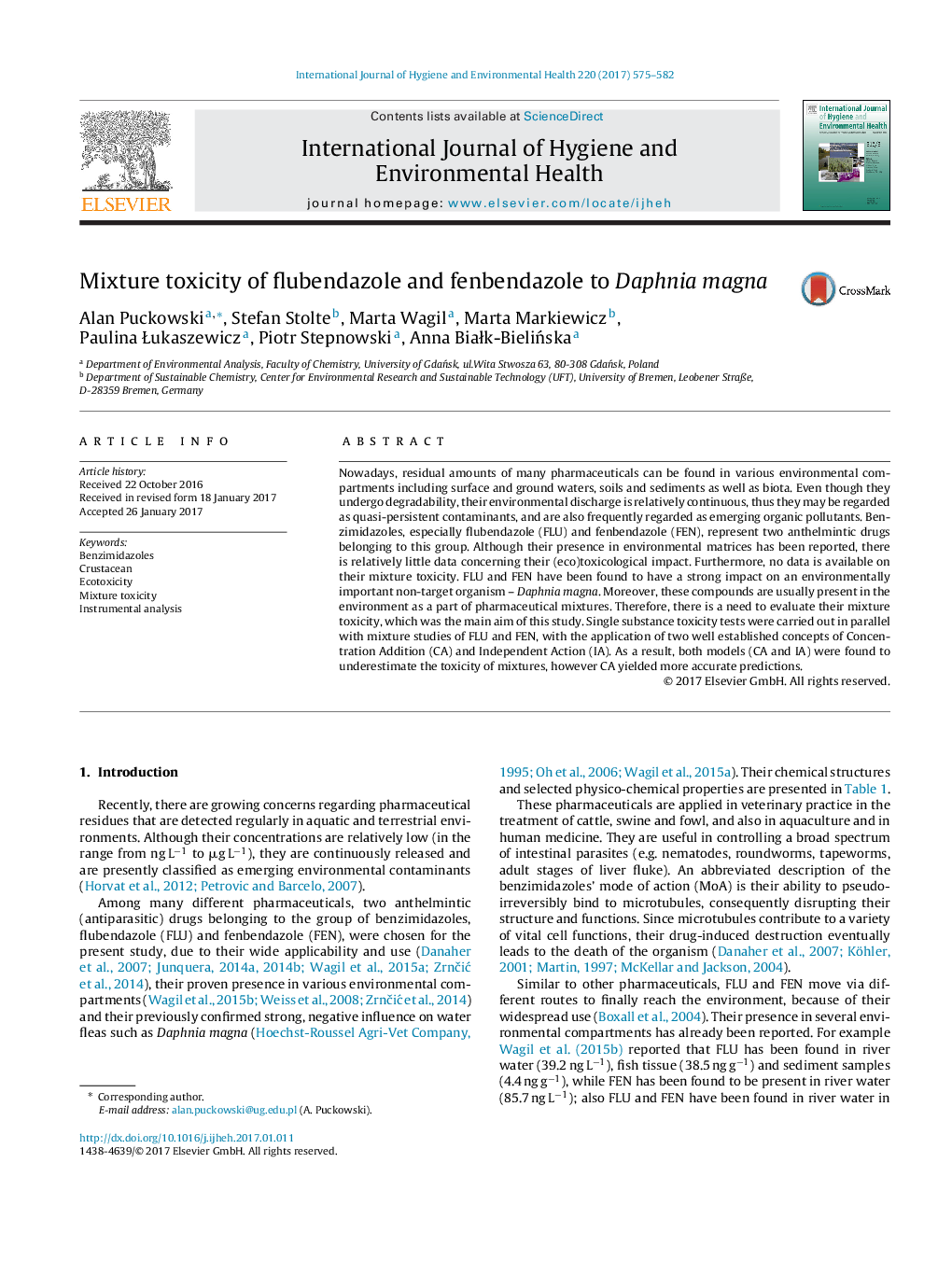| Article ID | Journal | Published Year | Pages | File Type |
|---|---|---|---|---|
| 5560663 | International Journal of Hygiene and Environmental Health | 2017 | 8 Pages |
â¢Assessing the mixture toxicity of flubendazole and fenbendazole.â¢Predicting mixture toxicity using the Concentration Addition and Independent Action.â¢Complementing ecotoxicological studies with instrumental analysis.
Nowadays, residual amounts of many pharmaceuticals can be found in various environmental compartments including surface and ground waters, soils and sediments as well as biota. Even though they undergo degradability, their environmental discharge is relatively continuous, thus they may be regarded as quasi-persistent contaminants, and are also frequently regarded as emerging organic pollutants. Benzimidazoles, especially flubendazole (FLU) and fenbendazole (FEN), represent two anthelmintic drugs belonging to this group. Although their presence in environmental matrices has been reported, there is relatively little data concerning their (eco)toxicological impact. Furthermore, no data is available on their mixture toxicity. FLU and FEN have been found to have a strong impact on an environmentally important non-target organism - Daphnia magna. Moreover, these compounds are usually present in the environment as a part of pharmaceutical mixtures. Therefore, there is a need to evaluate their mixture toxicity, which was the main aim of this study. Single substance toxicity tests were carried out in parallel with mixture studies of FLU and FEN, with the application of two well established concepts of Concentration Addition (CA) and Independent Action (IA). As a result, both models (CA and IA) were found to underestimate the toxicity of mixtures, however CA yielded more accurate predictions.
